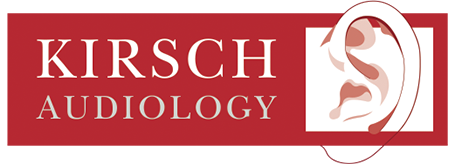Hearing assistive technology systems (HATS) are devices that can help you function better in your day-to-day communication situations. HATS can be used with or without hearing aids or cochlear implants to make hearing easier—and thereby reduce stress and fatigue. Hearing aids + HATS = better listening and better communication!
The following situations are difficult for all listeners, but they are especially difficult for people with hearing loss:
Distance between the listener and the sound source:
The farther away you are from a speaker, of course, the harder it is to hear the speaker. This is because the intensity, or loudness, of a sound fades rapidly as it travels over distance. So, while you may have no difficulty hearing someone in close range, you may have considerable difficulty hearing the same person across the room.
Poor room acoustics/reverberation:
A room’s acoustics are the quality of sound maintained in the room, and they can affect your ability to hear effectively. Sound waves bounce off hard surfaces like windows, walls, and hard floors. This creates sound reflections and echoes (called “reverberation”). The result of excess reverberation is distorted speech. Large gyms, cathedrals, and open marble lobbies quickly come to mind when we think about reverberation. Reverberation also can occur in smaller spaces such as classrooms. We’ve all experienced how much easier it is to hear in rooms that are carpeted and have upholstered furniture (which absorbs noise) than in empty rooms with tile or cement floors.
Competing noise in the environment:
Most rooms have background noise that competes with the spoken message or sound we want to hear. Examples of background noise include ventilation systems, others talking, paper shuffling, computers, radios, TVs, outside traffic or construction, and activities in adjacent rooms. Background noise can make hearing very challenging. For optimum hearing, speech should be at least 20–25 decibels (dB) louder than any competing noise. This is called the signal-to-noise ratio, or S/N ratio.
Any one of these conditions (distance, noise, or reverberation) can create listening problems. More often than not, they occur together and have a debilitating effect on the ability to hear and process speech. HATS can help you overcome these listening difficulties.
FM Systems
Personal frequency modulation (FM) systems are like miniature radio stations operating on special frequencies. The personal FM system consists of a transmitter microphone used by the speaker (such as the teacher in the classroom, or the speaker at a lecture) and a receiver used by you, the listener. The receiver transmits the sound to your ears or, if you wear a hearing aid, directly to the hearing aid. Personal FM systems are useful in a variety of situations, such as in a classroom lecture, in a restaurant, in a sales meeting, or in a nursing home or senior center. FM systems are also used in theaters, places of worship, museums, public meeting places, corporate conference rooms, convention centers, and other large areas for gathering. In these situations, the microphone/transmitter is built into the overall sound system. You are provided with an FM receiver that can connect to your hearing aid or cochlear implant. The receiver can also connect to a headset if you don’t wear a hearing aid.
Infrared Systems
Infrared systems are often used in the home with TV sets, but, like FM systems, they can also be used in large settings like theaters. With an infrared system, sound from the TV is transmitted using infrared light waves. This sound is transmitted to your receiver, which you can adjust to your desired volume. The TV can be set to a volume comfortable for any other viewers with normal hearing. Thus, TV watching as a family becomes pleasurable for all.
Induction Loop Systems
Induction loop systems are most common in large group areas. They can also be purchased for individual use. Induction loop systems work with hearing aids. An induction loop wire is permanently installed (typically under a carpet or in the ceiling) and connects to a microphone used by a speaker. The person talking into the microphone generates a current in the wire, which creates an electromagnetic field in the room. When you switch your hearing aid to the “T” (telecoil/telephone) setting, your hearing aid telecoil picks up the electromagnetic signal. You can then adjust the volume of the signal through your hearing aid.
Other Hearing Assistive Technology Systems Solutions
There are many other HATS available, such as:
- Telephone amplifying devices for cordless, cell, digital, and wired phones
- Amplified answering machines
- Amplified telephones with different frequency responses
- Loud doorbells
- Computers
- Wake-up alarms (loud bell or vibrating clock)
Are there communication devices besides those that assist listening?
Yes, there are visual systems that can be used alone or in combination with listening devices and hearing aids. Persons who are hard of hearing or deaf, or even persons who have no hearing loss, can benefit. There are also alerting devices that signal you when sounds such as the following occur:
- Doorbell or knock at the door
- Telephone
- Fire alarm or smoke alarm
- Baby crying
- Alarm clock
Many of these solutions use strobe light or conventional light to alert you. Others use vibrating systems to alert you.
Examples of visual systems include the following:
Text telephones, which allow phone conversations to be typed and read rather than spoken and heard
Computerized speech recognition, which allows a computer to change a spoken message into a readable text document
Closed-captioned TV, which allows text display of spoken dialogue and sounds. All TVs now sold with screens of at least 13 inches must have built-in captioning.
Note taking, which allows a hard of hearing person to concentrate on listening and watching a speaker while a trained person takes notes. This has been used in schools not only for students who are deaf or hard of hearing but also for students who are unable to write.
